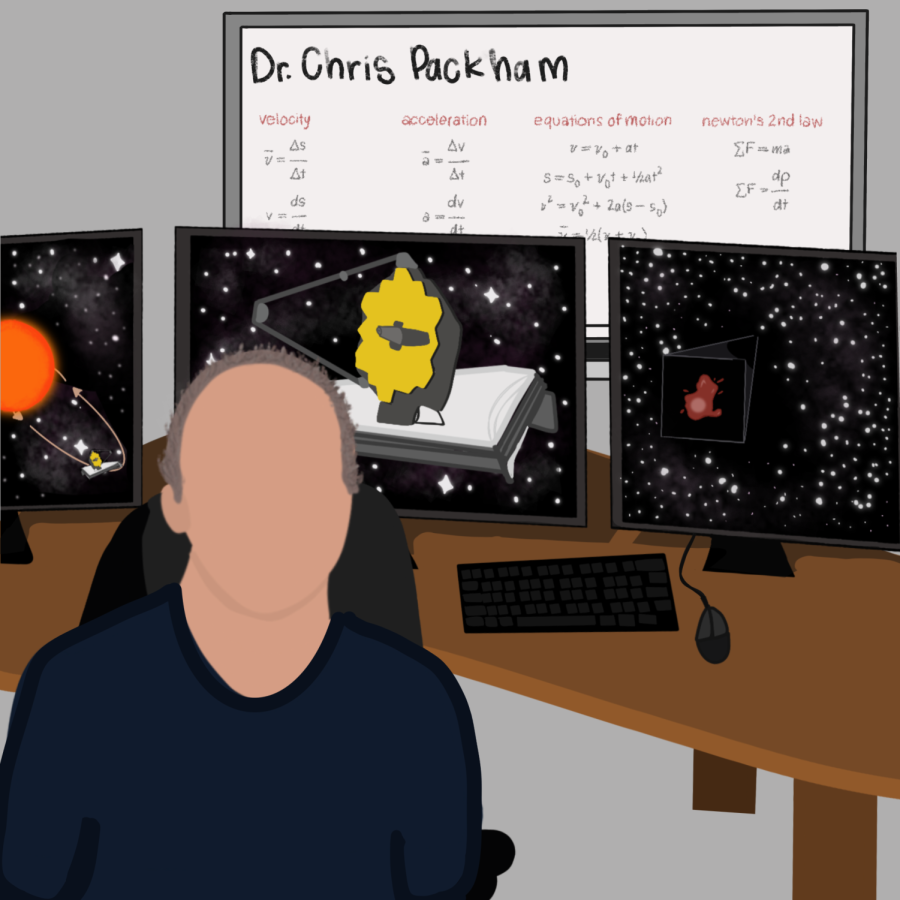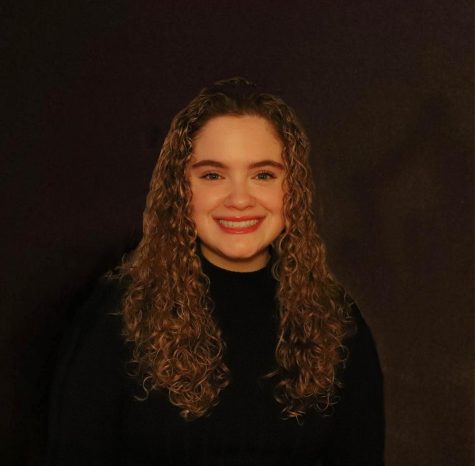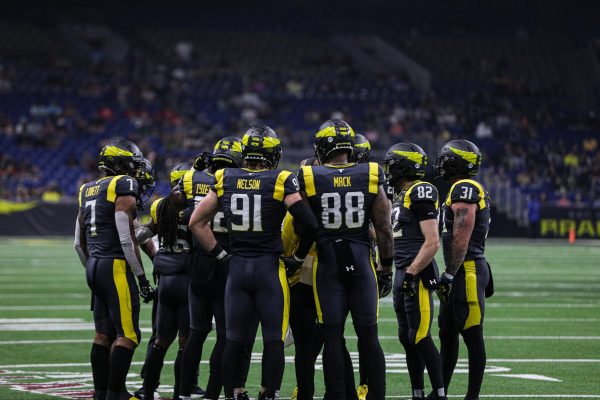UTSA faculty member part of James Webb Telescope Project
February 22, 2022
Chris Packham, a faculty member at UTSA’s Department of Physics and Astronomy, is one of the scientists around the world who will receive data collected by the James Webb Telescope. The telescope, whose development was led by NASA, is designed for infrared astronomy. This allows for an instrument to detect infrared wavelengths i.e., light that is beyond the visible spectrum.
Packham has worked on several astronomy projects and explained the use of infrared instrumentation.
“From my Ph.D. … I had the chance to use a new telescope at the time — something called the United Kingdom Infrared Telescope … and that led me on this path to looking at active galactic nuclei,” Packham said. “At all of [the] telescopes, we had something called thermal, infrared instrumentation … we looked at active galactic nuclei and once we had looked at as many things as we could sensibly look at from the ground, the next step is to go to space.”
Packham expressed interest in using infrared instrumentation to look at exoplanets.
“The primary areas that I’m excited to use that infrared instrumentation [are] in looking for exoplanets, that’s planets around distant stars other than the Sun and looking at the centers of active galactic nuclei,” Packham said.
Packham explained that the telescope, which launched in December of 2021, has unique properties that makes it unlike any other telescope. These properties include 18 hexagonal gold mirrors as well as a solar shield which helps keep the telescope cool.
“The reason why it’s so cool and why people are so excited about it is, you can see underneath it, there’s like this silvery stuff. This is [a] so-called solar shield. It acts like a parasol … so it shades the mirror, keeps it nice and cool, nice and protected from particles emitted from the Sun. And that makes it very, very cool,” Packham said.
Packham also explained how the location of the telescope in space makes it very unique and ideal to use.
“It’s also a million miles away from Earth, so that means we get very little contamination … we don’t get any heat emission from the Earth. So it’s incredibly sensitive to infrared radiation. Hundreds of thousands of [times] more sensitive than we’ve ever seen before and that’s why people are so excited about it,” Packham said.
Graduate student Mason Leist, who works in Packham’s lab, will also be utilizing data obtained from the telescope. Leist’s dissertation focuses primarily on using data from the James Webb Telescope to study “dusty environments surrounding supermassive black holes in active galaxies” in an effort to understand how a supermassive black hole influences its host galaxy.
“What I’ve been doing over the past several months is, creating models and model simulations of some of the observations we expect to see with the telescope,” Leist said.
Leist further explained the advantage UTSA facilities provide in helping process the data.
“Part of the work that we’re going to be doing with this James Webb data, besides storing the raw data here is, we plan on using the high-performance computing to help us reduce this data. That’s another great advantage of some of the facilities here at UTSA being able to help us out with this data,” Leist said.
As an undergraduate student under Packham, Leist developed an interest in active galactic nuclei and decided to pursue it as a topic of study.
“I actually met Chris whenever I was an undergrad in the physics department. And I was sort of asking around, you know, what does a physicist do — what can I do as a physics major. And Chris sat me in his office and we talked for the better part of a half-hour one day about these objects called active galactic nuclei and how they’re these massive objects that affect galaxies around them. And it just … it blew my mind [and] I knew then that’s what I wanted to study,” Leist said.
Leist also expressed the importance of being able to work with data from the James Webb Telescope.
“Well, to have an opportunity to be some of the first people to use the James Webb Telescope, to use … data from the telescope is a tremendous opportunity,” Leist said. “Just to see this instrument, this telescope that took the better part of two decades to develop … to see everything working and to see [it] unfolding and unfurling is phenomenal. It’s just a testament to what we can do as humanity.”
Packham echoed a similar opinion and emphasized the importance of understanding scientific phenomena, including supermassive blackholes and the origin of galaxies.
“So for me, it’s always science first. That’s the key thing — you’ve gotta go after the science … so for me, I just wanted to understand how these galaxies work, how the black hole’s center affect[s] the host galaxy — and that leads us to using some of the cool things that are available, such as James Webb,” Packham said.
The telescope recently captured its very first image of a star, something that Packham described as “thrilling, amazing [and] astounding.”
“We are literally building a robotic telescope in space a million miles from Earth. What a thrilling time to be in astronomy,” Packham said.
Packham, who has been at UTSA for 10 years, also commented on the university’s recent Carnegie R1 designation.
“It’s really exciting to be able to bring some of this data from a million miles from Earth to here [in] San Antonio … as we’ve moved, very recently into Carnegie R1 status, I think it helps to show [that] students, young scientists and faculty here can gain access to this data, we can work together, we can bring visitors from around the world here and really help to cement the progression as we try to understand active galactic nuclei and try to work with people around UTSA,” Packham said. “So, it’s really exciting [to be a] part of an R1 institution. We’ve all been working for this for a long time. I’ve been here 10 years, so it’s great that I’ve played a minuscule part in helping us obtain R1.”
Packham concluded by explaining the importance of collaboration in the context of studying exoplanets i.e., planets around stars other than the Sun.
“The exciting thing is it started off as the debate of astronomy, but now, in order to move the field forward, we need geologists, chemists, physicist[s], atmospheric people and soon, I hope, we’re gonna need biologists, to help us understand how to find if there’s life on those other planets,” Packham said. “So the study of exoplanets is perhaps the quintessential example of multidisciplinary teams working together to go after perhaps one of the most thrilling questions of humanity, which is — is there life on other planets?”













